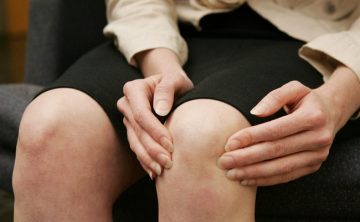- Home
- Editorial
- News
- Practice Guidelines
- Anesthesiology Guidelines
- Cancer Guidelines
- Cardiac Sciences Guidelines
- Critical Care Guidelines
- Dentistry Guidelines
- Dermatology Guidelines
- Diabetes and Endo Guidelines
- Diagnostics Guidelines
- ENT Guidelines
- Featured Practice Guidelines
- Gastroenterology Guidelines
- Geriatrics Guidelines
- Medicine Guidelines
- Nephrology Guidelines
- Neurosciences Guidelines
- Obs and Gynae Guidelines
- Ophthalmology Guidelines
- Orthopaedics Guidelines
- Paediatrics Guidelines
- Psychiatry Guidelines
- Pulmonology Guidelines
- Radiology Guidelines
- Surgery Guidelines
- Urology Guidelines
Noninvasive ultrasound stimulation of spleen promises future treatments for inflammatory arthritis

Inflammatory arthritis is common autoimmune disease, where body's immune system attacks healthy tissue in addition to germs, viruses and other foreign substances. This reaction can cause pain, stiffness, and joint damage. Current treatments usually include medicines that have a wide variety of side effects.
Researchers at the University of Minnesota, in collaboration with researchers at Medtronic, have shown that noninvasive daily ultrasound stimulation of the spleen in mice with inflammatory arthritis resulted in significantly less joint swelling compared to arthritic mice that were not treated. The research is a first step to developing new treatment options for more than a million people in the United States who currently suffer from rheumatoid arthritis.
The research is currently published in Nature Communications and has resulted in a University of Minnesota-led preliminary human clinical trial.
"What we found in our mouse study is that we could actually 'turn down' the inflammatory response with daily ultrasound stimulation of the spleen from outside the body," said Daniel Zachs, the first author of the study and a biomedical engineering researcher in the University of Minnesota's College of Science and Engineering. "We're hopeful that this type of noninvasive treatment could someday supplement current treatments for people with rheumatoid arthritis."
Researchers involved in this new study induced inflammatory arthritis in laboratory mice and then targeted the spleen with ultrasound stimulation for seven days following the injection. Some mice were treated only after the arthritis was evident on the third day. The mice that received the ultrasound treatment had significantly less joint swelling than arthritic mice that did not receive ultrasound stimulation.
"Using noninvasive ultrasound stimulation of the spleen to treat a progressive disease like inflammatory arthritis seemed like a far-fetched idea," said Hubert Lim, Ph.D., a senior author of the study and a University of Minnesota biomedical engineering associate professor in the College of Science and Engineering and the Medical School. "We were pleasantly surprised with our results and how a separate study, independently performed by GE Research and The Feinstein Institute for Medical Research published in the same issue of Nature Communications, showed findings that were consistent with our research."
In addition to focusing on reducing inflammation, the researchers also studied the specific type of white blood cells that were required for reducing inflammation. By analyzing gene expression and deleting specific types of white blood cells, the researchers found that white blood cells called T cells and B cells were both involved in reducing the severity of arthritis.
"Rheumatoid arthritis can be a devasting disease if not treated aggressively," said Bryce Binstadt, M.D., Ph.D., a senior author of the study and an associate professor of Pediatrics in the Division of Pediatric Rheumatology in the University of Minnesota Medical School. "The idea that we can improve arthritis treatment by using ultrasound rather than additional medications is exciting. This research shows the progress we can make when doctors and engineers come together to solve problems."

Disclaimer: This site is primarily intended for healthcare professionals. Any content/information on this website does not replace the advice of medical and/or health professionals and should not be construed as medical/diagnostic advice/endorsement or prescription. Use of this site is subject to our terms of use, privacy policy, advertisement policy. © 2020 Minerva Medical Treatment Pvt Ltd